3. The first in London

Roger Evans, a long-standing sufferer from neuralgia, had been converted to the bath at Urquhart’s Riverside home near Rickmansworth while there on committee business.
He determined to build himself a Turkish bath at his house in Bell Street, just off the Edgware Road, and some time around the beginning of April 1860,2 he opened it for use by fellow mechanics at a charge of a shilling a time.
The hot room was heated by a brick flue, about three feet high and nine inches wide, running along three sides of the room, and raising its temperature to 160°F.
Evans’s bath was visited on several occasions by R H Goolden, a doctor at St Thomas’s Hospital, who was campaigning to instal a Turkish bath there. Writing in The Lancet, he said,
For some time I watched the effect of the bath in Bell-street, before the establishment of many edifices, so much more complete, which have since been established; and I went into the bath at such times as that I could observe its effects upon the lower classes, who resorted there in great numbers, not as a luxury, but as a remedy, as they supposed, for disease; and I consider, however much anyone may sneer at my occupation, I could not be better engaged than amongst these people, and studying so interesting a subject, even at some inconvenience. There were often ten people in the hot room at one time, all invalids, and I found them quite willing to tell me all their complaints, and to let me examine them. They were principally artizans, small shop-keepers, policemen, admitted at a small fee. I saw there cases of fever, scarlatina, phthisis, gout, rheumatism (acute and chronic), sciatica and tic douloureux, periosteal nodes, bronchitis, pleurisy; forms of skin disease—viz, eczema, psoriasis, lepra, impetigo; diseased liver, dyspepsia, ague, dropsy, with diseased heart and diseased kidneys.
To expect a cure, or even benefit, in all these cases, would be unreasonable; but I found relief produced to a far greater extent than I was prepared for. The most marked relief was found in cases of gout, rheumatism, periosteal nodes, and sciatica...6
This bath was so successful that by 11 September Evans had already built and opened a larger establishment at Golden Square.
The new bath was managed by John Johnson who had served on both the Stafford and Manchester Foreign Affairs Committees. 6,000 bathers took Turkish baths there during its first five months, and income and expenditure accounts were copied and sent to Urquhart for his information.
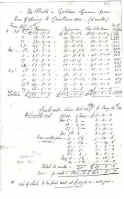
The Bath in Golden Square from time of opening to Christmas 1860 (16 weeks) From Sept 11th
Excess of income over expenditure for the 16 weeks was £457-3-2,
‘out of which to be paid rent at £129 per an. and gas.’
By the end of 1860 there were already at least two further establishments in London.
‘Turkish Baths are diffusing themselves like asteroids in November,’ wrote George Jacob Holyoake, in an article on London’s baths published in The Reasoner,7 the following February.
And soon entrepreneurs, less committed to Urquhart’s high standards, joined the bandwagon.
‘There are now upwards of thirty public baths in London (several of them, I fear, not so scientifically constructed, nor so well ventilated, as they ought to be),’ wrote Dr T Rayner that same year.8
| Early Turkish baths in London | |
| 1860 | Bell Street Palace Street Golden Square Euston Road (182 & 184) Leyton Road (186) |
| 1861 | Canterbury Row Conduit Place Queen Square (1) Alfred Place Newton Road (16) Upper Berkeley Square (for horses) |
By the mid 1870s, Turkish baths could also be found in London’s hotels, hydros, asylums, hospitals—though the one at St Thomas’s Hospital, curiously, was never used—and even in a few private houses.
Altogether, I have identified more than 600 Turkish baths which opened in the British Isles after 1856.

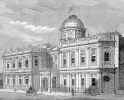
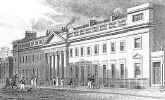
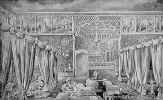
Leicester Square
Victoria Street
York Terrace
Earl’s Court Gardens
Of these, over one hundred were located in London, three quarters of which were opened during the nineteenth century.
Judging by contemporary accounts, they were by no means the only ones. Yet today, barely a score remain open, of which only seven—none of them in London—are Victorian.
Most establishments in London were owned by individuals working with members of their families, but the rise of the bath was paralleled by that of the limited liability company, and over twenty-five of these were formed to build, purchase or run Turkish baths in nineteenth century London.
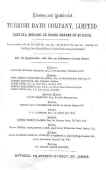
Front and back pages
of the second prospectus of the
London & Provincial
Turkish Baths
Company Limited
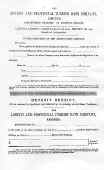
By far the most famous was Urquhart’s London & Provincial Turkish Bath Company, which opened the London Hammam at 76 Jermyn Street in 1862. Here was the fashionable paradigm of the ideal Turkish bath, patronised by several of Victoria’s sons.
It remained open until just before the end of 1940, closing just months before the building was destroyed on 17 April 1941, during the London Blitz.
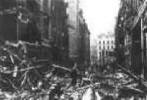
If the London Hammam is no more, it is still possible to get some idea of the richness of one of Nevill’s nine London Turkish baths by visiting the venue which now occupies this wonderful oasis in a desert of 2oth century modernism.
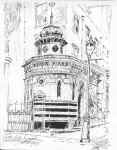
Entrance to Nevill’s New Broad Street
Turkish Baths in 1963 and 1999.
The baths closed
in 1954, and is
now a popular functions venue

There had been baths here since 1817, and Turkish baths since 1871, but the present building, now listed, was opened by the Nevills in 1895.
Passing through the magnificent vestibule, bathers descended to the hot rooms and relaxation areas below.
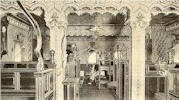
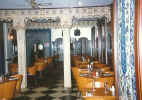

Built in a style typified by its fine Craven, Dunhill tiles, and taking advantage of its location next to Liverpool Street Station, the Stock Exchange, and Lloyds, this establishment was clearly designed for the City gent, with a three-and-sixpenny admission charge which, after 7 o’clock in the evening, was reduced to two shillings.


